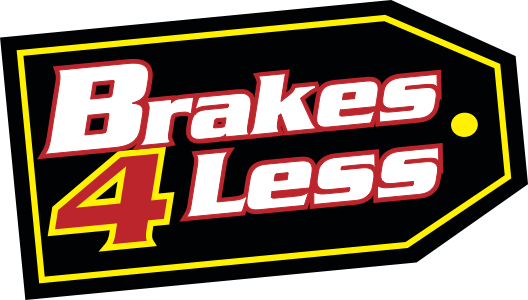FAQs
Brakes 4 Less
Get the answers to all your brake questions from Brakes 4 Less.
Let us answer all your questions about your brakes and how they affect your vehicle. You can get all the information you need in one place from the brake experts. Never worry about your brakes again when you come to us.
-
How do I know if I have brake problems and need repairs?
If you have any indication that you might have something wrong with your brakes visit us immediately for a free inspection. Your safety is important to us.
-
Brake problem indications:
- Squealing Noise - High-pitched noise or grinding sounds
- Pulling - When your car pulls to one side to another while braking
- Shaking/Vibration - Shaking/vibration coming from steering wheel, brake pedal or entire vehicle
- Brake Light - When your brake light indicator is on it indicates a problem with your brakes
- Low Pedal - This occurs when your brakes need an adjustment or has failing components
- Hard Pedal - Indicates damaged brake linings or power brake trouble
- ABS Light - Could indicate low brake fluid or a bad component that will cause your brakes to fail
- Grab - When your brake grab with little pressure your brake system may be loose
-
How does my brake system work?
Your brake system has many different parts and components to it, but there are only three major systems found in cars and trucks. Your brake system in an important safety feature on your vehicle and should be maintained regularly.
-
Which brake system do you have?
Master Cylinder - This system works when you step on your brake pedal and push brake fluid through your brake lines down to each of your wheels. This allows the pistons in your master cylinder to create pressure, which allows you to stop.
Disc Brakes - Disc brakes work when you step on the brake pedal and your brake fluid becomes pressurized causing the caliper piston to extend and push the outer brake pad against the rotor.
The caliper then shifts outward, sliding on the caliper mounting bolt and disc hardware to force the inner brake pad against the rotor. The sandwiching effect causes friction against the turning rotor to stop your vehicle.
Drum Brakes - Once you step on the brake pedal the vehicle's brake fluid becomes pressurized and forces the wheel cylinder pistons to extend outward to force the primary and secondary shoes against the drum to create friction and stop the vehicle.
Business Hours
- Mon - Sat
- -
- Sunday
- Closed

Share On: